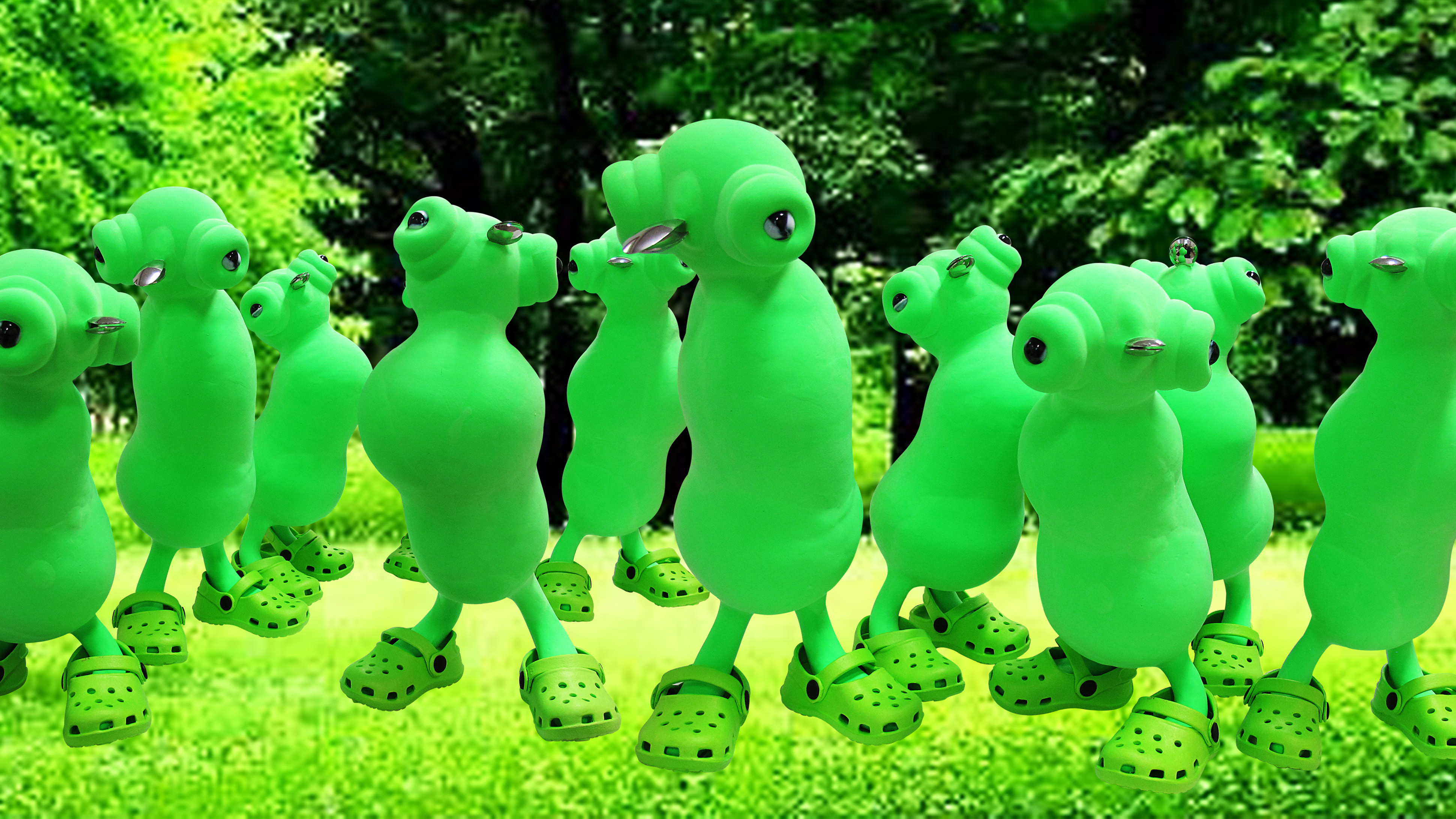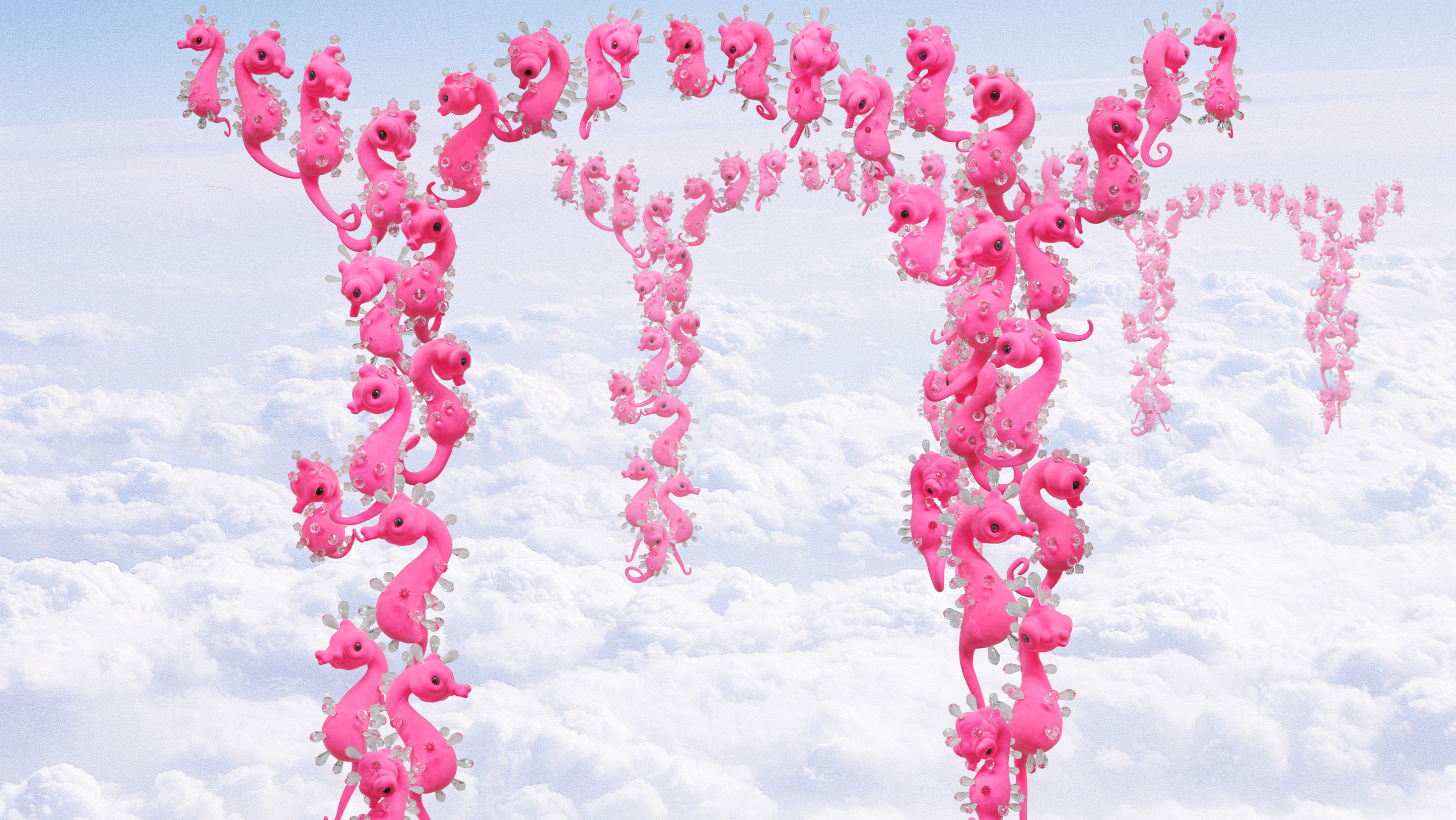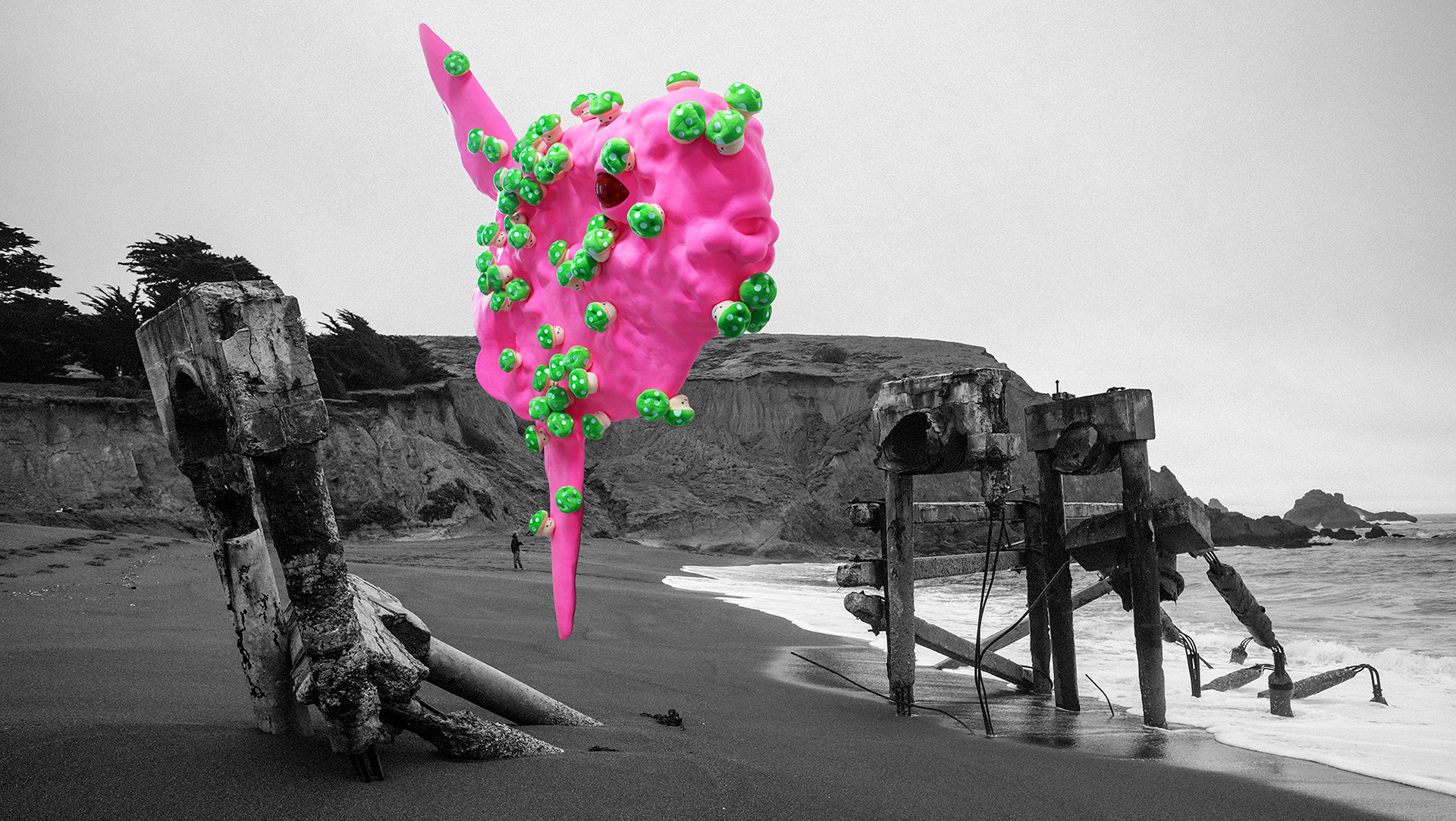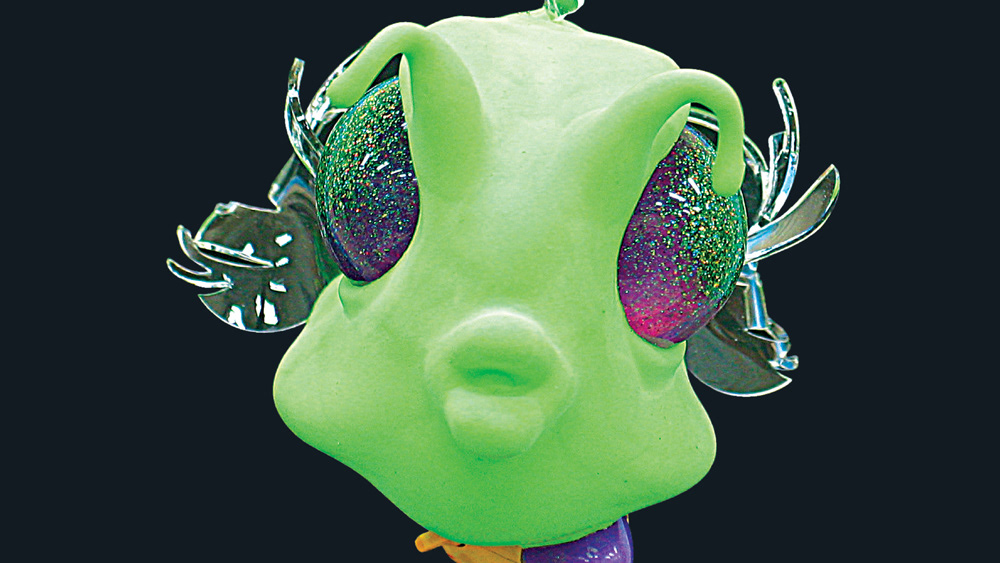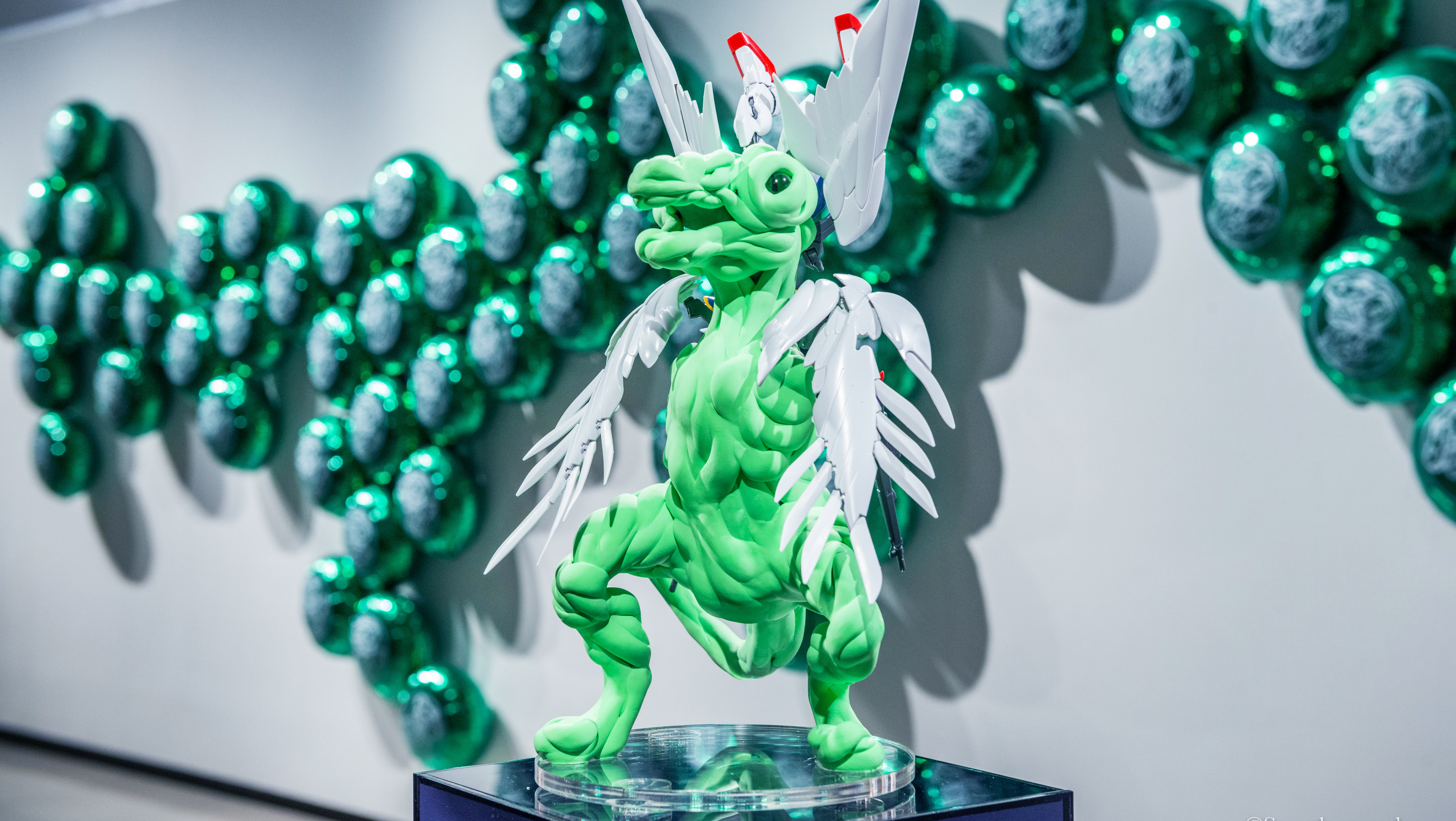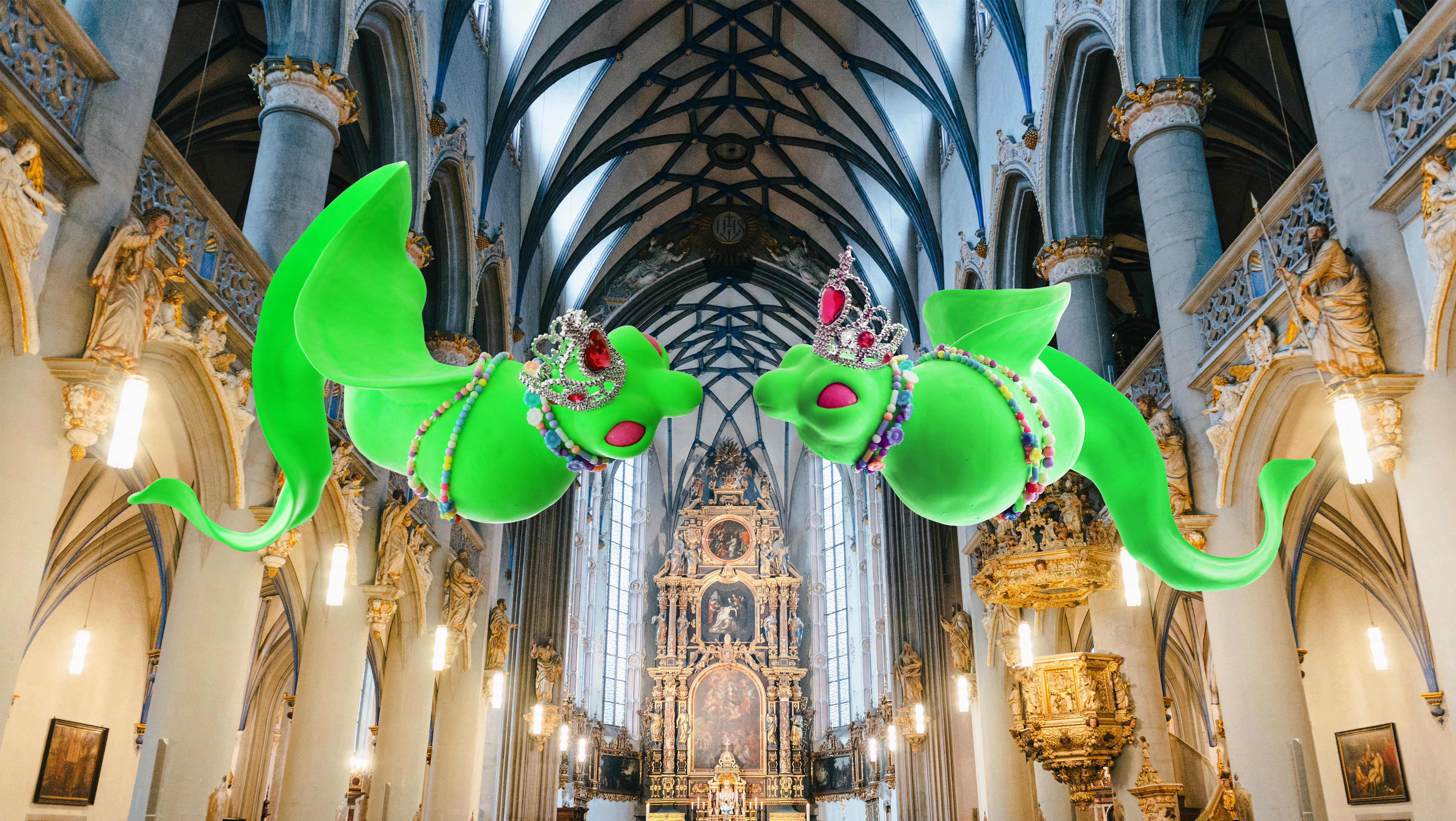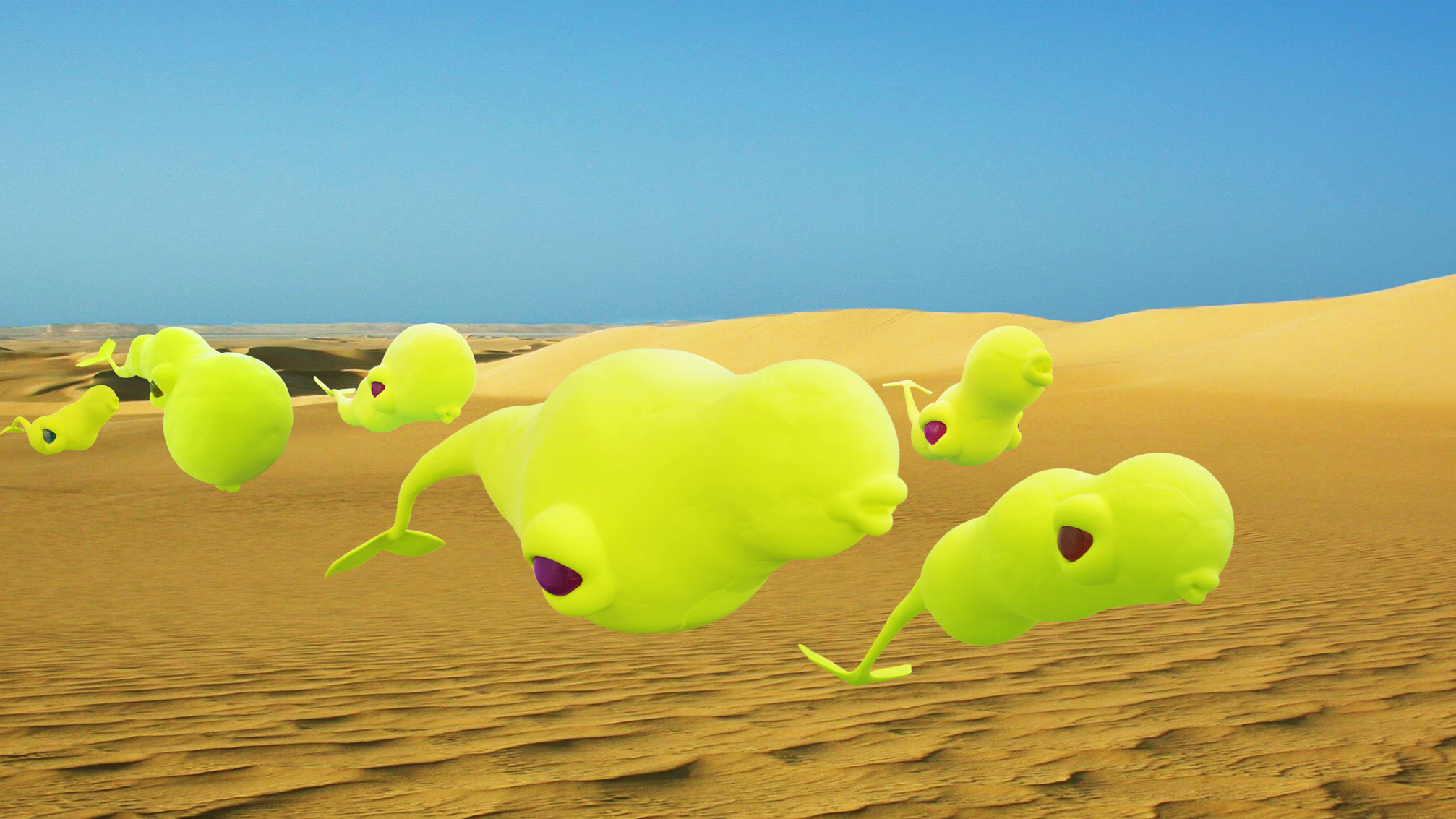The adult mermaid_digital image_160*140_2007
The adult mermaid_digital image_160*140_2007
Mermaid babies who exist in the imaginary world emerge as independent entities through the process of new birth. They want to recognize themselves as autonomous beings, but they go through an inevitable period of dependence on their parents for survival. In this desire for complete separation and independence, mermaid babies form a psychological and perceptual strategy of 'looking vaguely'.
In the exhibition space, mermaid babies are installed in a way that seems to be swimming in the water, and occupy the center of the exhibition hall. On the other hand, an adult mermaid of a real human size is arranged on the wall of the exhibition hall, and this adult mermaid is gradually expressed as a being forgotten by someone. This symbolically reveals the incomplete cognitive structure of the parent (mother) object perceived by the mermaid baby.
Because early-stage mermaid babies are immature in their self-awareness, they cannot yet perform an integrated perception that simultaneously accepts the positive and negative aspects of adult mermaids, that is, conflicting emotions and characteristics. They proceed with the process of splitting consciousness to selectively accept only the parts that are difficult to accept. This is a psychological mechanism to separate the conflicting and heterogeneous characteristics that exist within the object or oneself, experience only one aspect at the level of consciousness and push the other out of consciousness.
As a result of this division, the adult mermaid (mother) is not yet recognized as a 'whole object' in the conscious world of the mermaid baby, but is perceived and experienced as a 'part object'. In other words, the mermaid baby does not accept the existence of a mother as an integrated whole, but only targets specific partial aspects or emotional aspects.
Especially when it is difficult for mermaid babies to endure negative emotions, they exclude the positive characteristics of their mothers from consciousness and overgeneralize only the negative aspects as a whole. As a result, the mermaid baby avoids contacting the mother's full appearance, and eventually attempts to make the mother's shape itself perceptually distant. This process can be understood as the epitome of the initial divisive cognitive structure that appears in the formation of relationships with objects.
In the exhibition space, mermaid babies are installed in a way that seems to be swimming in the water, and occupy the center of the exhibition hall. On the other hand, an adult mermaid of a real human size is arranged on the wall of the exhibition hall, and this adult mermaid is gradually expressed as a being forgotten by someone. This symbolically reveals the incomplete cognitive structure of the parent (mother) object perceived by the mermaid baby.
Because early-stage mermaid babies are immature in their self-awareness, they cannot yet perform an integrated perception that simultaneously accepts the positive and negative aspects of adult mermaids, that is, conflicting emotions and characteristics. They proceed with the process of splitting consciousness to selectively accept only the parts that are difficult to accept. This is a psychological mechanism to separate the conflicting and heterogeneous characteristics that exist within the object or oneself, experience only one aspect at the level of consciousness and push the other out of consciousness.
As a result of this division, the adult mermaid (mother) is not yet recognized as a 'whole object' in the conscious world of the mermaid baby, but is perceived and experienced as a 'part object'. In other words, the mermaid baby does not accept the existence of a mother as an integrated whole, but only targets specific partial aspects or emotional aspects.
Especially when it is difficult for mermaid babies to endure negative emotions, they exclude the positive characteristics of their mothers from consciousness and overgeneralize only the negative aspects as a whole. As a result, the mermaid baby avoids contacting the mother's full appearance, and eventually attempts to make the mother's shape itself perceptually distant. This process can be understood as the epitome of the initial divisive cognitive structure that appears in the formation of relationships with objects.
The mermaid baby_resin, baby doll_45*40*22_2007
Dream_resin, electronic device(CPU board, motor)_16*6*5(each)_2007
상상의 세계 안에서 존재하는 인어 베이비들은 새로운 탄생의 과정을 통해 하나의 독립된 개체로 출현한다. 이들은 스스로를 자율적 존재로 인식하고자 하나, 생존을 위해 부모에게 절대적으로 의존해야 하는 필연적 시기를 거친다. 완전한 분리와 독립을 향한 이러한 욕구 속에서 인어 베이비들은 ‘흐릿하게 바라보기’라는 심리적·지각적 전략을 형성하게 된다.
전시 공간에서 인어 베이비들은 물속을 헤엄치는 듯한 방식으로 설치되며, 전시장 중앙을 차지한다. 반면 전시장 벽면에는 실제 인간 크기의 성인 인어가 배치되어 있는데, 이 성인 인어는 점차 누군가에게 잊혀지는 존재로 표현된다. 이는 인어 베이비가 지각하는 부모(엄마) 대상의 불완전한 인식 구조를 상징적으로 드러낸다.
초기 단계의 인어 베이비는 자기 인식 능력이 미성숙하기 때문에 성인 인어의 긍정적 측면과 부정적 측면, 즉 상충되는 정서와 특성을 동시에 수용하는 통합적 지각을 아직 수행할 수 없다. 그들은 받아들이기 어려운 측면을 배제하고, 자신이 감당할 수 있는 부분만 선택적으로 수용하기 위해 의식의 분열(splitting) 과정을 진행한다. 이는 대상 또는 자기 자신 안에 존재하는 갈등적·이질적 특성들을 분리하여, 어느 한 측면만을 의식 수준에서 경험하고 다른 측면은 의식 밖으로 밀어내고자 하는 심리적 기제이다.
이러한 분열의 결과, 성인 인어(엄마)는 인어 베이비의 의식 세계에서 아직 ‘온전한 대상(whole object)’으로 인식되지 못하며, ‘부분대상(part object)’으로 지각되고 경험된다. 다시 말해, 인어 베이비는 엄마라는 존재를 통합된 전체로 받아들이지 못하고, 특정한 부분적 측면 혹은 정서적 국면만을 대상으로 삼는다.
특히 인어 베이비가 부정적 정서를 견디기 어려운 경우, 그들은 엄마의 긍정적 특성을 의식에서 배제하고, 부정적 측면만을 전체로 과대 일반화한다. 이로 인해 인어 베이비는 엄마의 온전한 모습과 접촉하기를 회피하게 되며, 결국 엄마의 형상 자체를 지각적으로 멀어지게 만들고자 하는 시도를 한다. 이러한 과정은 대상과의 관계 형성에서 나타나는 초기 분열적 인식 구조의 전형으로 이해될 수 있다.
Dinosaurs appearing in the exhibition are set as "forgotten beings," which contain distant longing from the self-deception world formed at a very personal level. In a situation where it is difficult to survive without a protective basis, mermaid babies instinctively track the source of this longing and are on a journey toward it.
A mermaid baby is a contradictory being who has a desire to escape from an adult mermaid and an impulse to depend on him at the same time. They live with a dream, but were not born with a 'leg' that symbolizes that dream. This deficiency acts as their fundamental weakness, but at the same time functions as a driving force for continuous efforts to realize that dream.
Through this exhibition, I would like to explore how the perception of dependent beings can change, and further present visually an attempt to escape from the world of self-deception that I have built.
A mermaid baby is a contradictory being who has a desire to escape from an adult mermaid and an impulse to depend on him at the same time. They live with a dream, but were not born with a 'leg' that symbolizes that dream. This deficiency acts as their fundamental weakness, but at the same time functions as a driving force for continuous efforts to realize that dream.
Through this exhibition, I would like to explore how the perception of dependent beings can change, and further present visually an attempt to escape from the world of self-deception that I have built.
전시에서 등장하는 공룡은 ‘잊혀져가는 존재’로 설정되어 있으며, 이는 지극히 개인적 차원에서 형성된 자기기만적 세계로부터 비롯된 아득한 그리움을 담고 있다. 보호적 기반 없이 생존하기 어려운 상황 속에서 인어 베이비들은 이러한 그리움의 근원을 본능적으로 추적하며, 그것을 향해 나아가야 하는 여정에 놓인다.
인어 베이비는 성인 인어로부터 벗어나고자 하는 욕구와 동시에 그에게 의존하려는 충동을 함께 지니는 모순적 존재이다. 이들은 꿈을 꾸며 살아가지만, 정작 그 꿈을 상징하는 ‘다리’를 가지고 태어나지 못했다. 이러한 결핍은 이들의 근본적 약점으로 작용하지만, 동시에 그 꿈을 실현하기 위해 지속적으로 노력하게 만드는 동력으로 기능한다.
본인은 본 전시를 통해 의존적 존재에 대한 인식이 어떻게 변화할 수 있는지 탐구하고, 나아가 스스로가 구축했던 자기기만의 세계로부터 벗어나려는 시도를 시각적으로 제시하고자 한다.
The mermaid baby_resin, baby doll_45*40*22_2007

